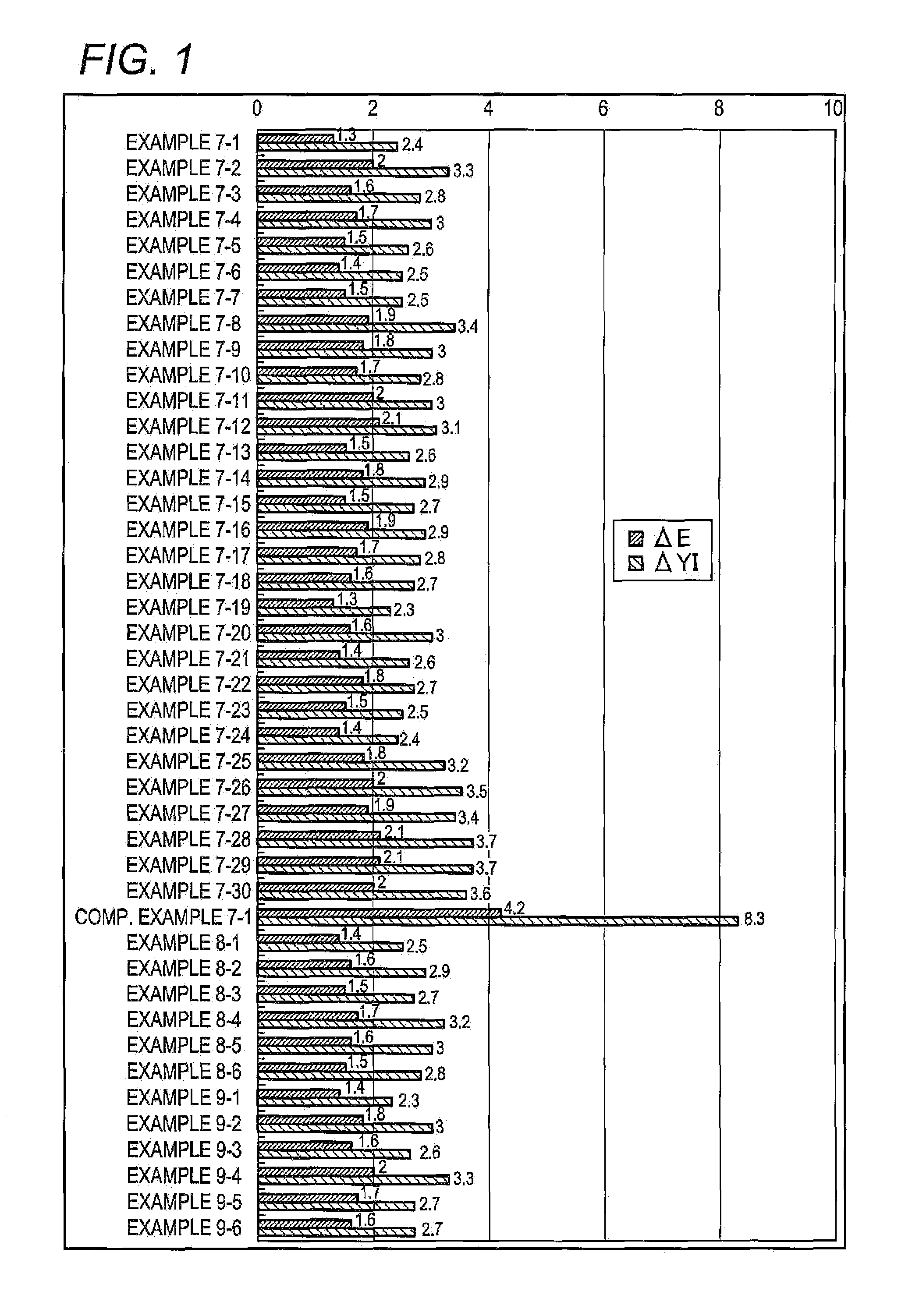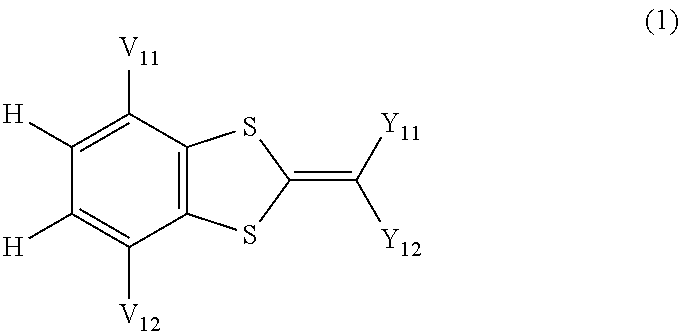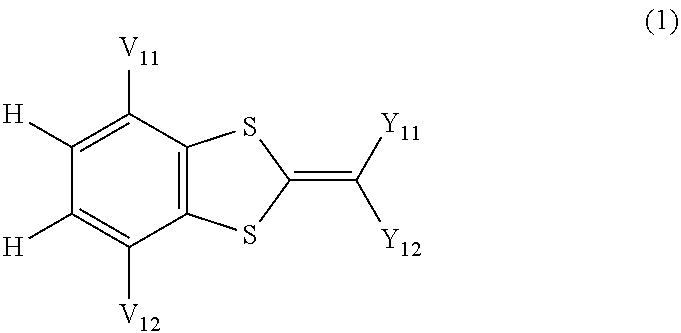Ultraviolet absorbing composition
a technology of ultraviolet light and absorbent composition, which is applied in the field of ultraviolet light absorbing composition, can solve the problems of skin damage, premature aging of the skin, and more human skin, and achieve the effects of preventing microbial contamination, preserving product quality and safety, and reducing the quantity of the quantity
- Summary
- Abstract
- Description
- Claims
- Application Information
AI Technical Summary
Benefits of technology
Problems solved by technology
Method used
Image
Examples
synthesis example 1
Preparation of Illustrative Compound (S-01)
[0169]To 6.26 g of (0.02 mol) compound A were added 30 ml of N-methylpyrrolidone, and 3.00 g of (0.024 mol) pivaloylacetonitrile, and the mixture was stirred at 80° C. under the nitrogen flow condition for 4 hours. After the reaction mixture was cooled, ethyl acetate and dilute hydrochloric acid were added to be treated. Then hexane was added, and after filtration, 6.10 g of the solid was obtained. 3.07 g (10 mmol) of the following compound B thus obtained was dissolved in 30 ml of tetrahydrofuran, followed by adding 1.8 g (23 mmol) pyridine, and then the mixture was cooled to 0° C. After 3.2 g (20 mmol) of 2-ethylhexanoyl chloride was added under nitrogen flow and then returned to a room temperature, the mixture was heated to 60° C. and stirred for 4 hours. Then treated by ethyl acetate and dilute hydrochloric acid, after that it was isolated by silica gel column (hexane / ethyl acetate=9 / 1) to obtain the desired product (output: 5.3 g, yiel...
synthesis example 2
Preparation of Illustrative Compound (S-06)
[0172]3.07 g (10 mmol) of the above B compound was dissolved in 50 ml of dimethylacetamide, followed by adding 5.5 g (24 mmol) of potassium carbonate and 4.6 g (24 mmol) of 2-ethylhexylbromide, and the mixture was stirred at 80° C. for 4 hours under the nitrogen flow condition. After the mixture was treated by ethyl acetate and dilute hydrochloric acid, it was recrystallized using ethyl acetate-acetonitrile solution. The desired product was obtained (output: 8.32 g, yield: 52%). The maximum absorption wavelength (λ max) of Illustrative Compound (S-06) is 382 nm (EtOAc), and it was revealed that the compound has the ultraviolet absorption ability in the long wavelength region.
[0173]Mass spectrometry value: m / z 532.0
[0174]1H NMR (CDCl3) δ0.88-0.99 (m, 12H), 1.28-1.39 (m, 8H), 1.42 (s, 9H), 1.43-1.56 (m, 8H), 1.71-1.80 (m, 2H), 3.90-3.99 (m, 4H), 6.80 (s, 2H)
synthesis example 3
Preparation of Illustrative Compound (S-18)
[0175]To 6.26 g (0.02 mol) of the compound A were added 30 ml of N-methylpyrrolidone, and 2.71 g of (0.024 mol) ethyl cyanoacetate, and the mixture was stirred at 80° C. under nitrogen flow for 4 hours. After the reaction mixture was cooled, ethyl acetate and dilute hydrochloric acid were added to be treated. Then hexane was added, and after filtration, 5.90 g of the solid was obtained. 2.9 g (10 mmol) of the following compound C thus obtained was dissolved in 30 ml of tetrahydrofuran, following by adding 1.8 g (23 mmol) of pyridine, and then the mixture was cooled to 0° C. After 3.1 g (20 mmol) of 2-ethylhexanoyl chloride was added under the nitrogen flow condition and then returned to room temperature, the mixture was heated to 60° C. and stirred for 4 hours. Then treated by ethyl acetate and dilute hydrochloric acid, after that it was isolated by silica gel column (hexane / ethyl acetate=9 / 1) to obtain the desired product (output: 0.7 g, y...
PUM
| Property | Measurement | Unit |
|---|---|---|
| wavelength | aaaaa | aaaaa |
| wavelength | aaaaa | aaaaa |
| wavelength | aaaaa | aaaaa |
Abstract
Description
Claims
Application Information
 Login to View More
Login to View More - R&D
- Intellectual Property
- Life Sciences
- Materials
- Tech Scout
- Unparalleled Data Quality
- Higher Quality Content
- 60% Fewer Hallucinations
Browse by: Latest US Patents, China's latest patents, Technical Efficacy Thesaurus, Application Domain, Technology Topic, Popular Technical Reports.
© 2025 PatSnap. All rights reserved.Legal|Privacy policy|Modern Slavery Act Transparency Statement|Sitemap|About US| Contact US: help@patsnap.com



